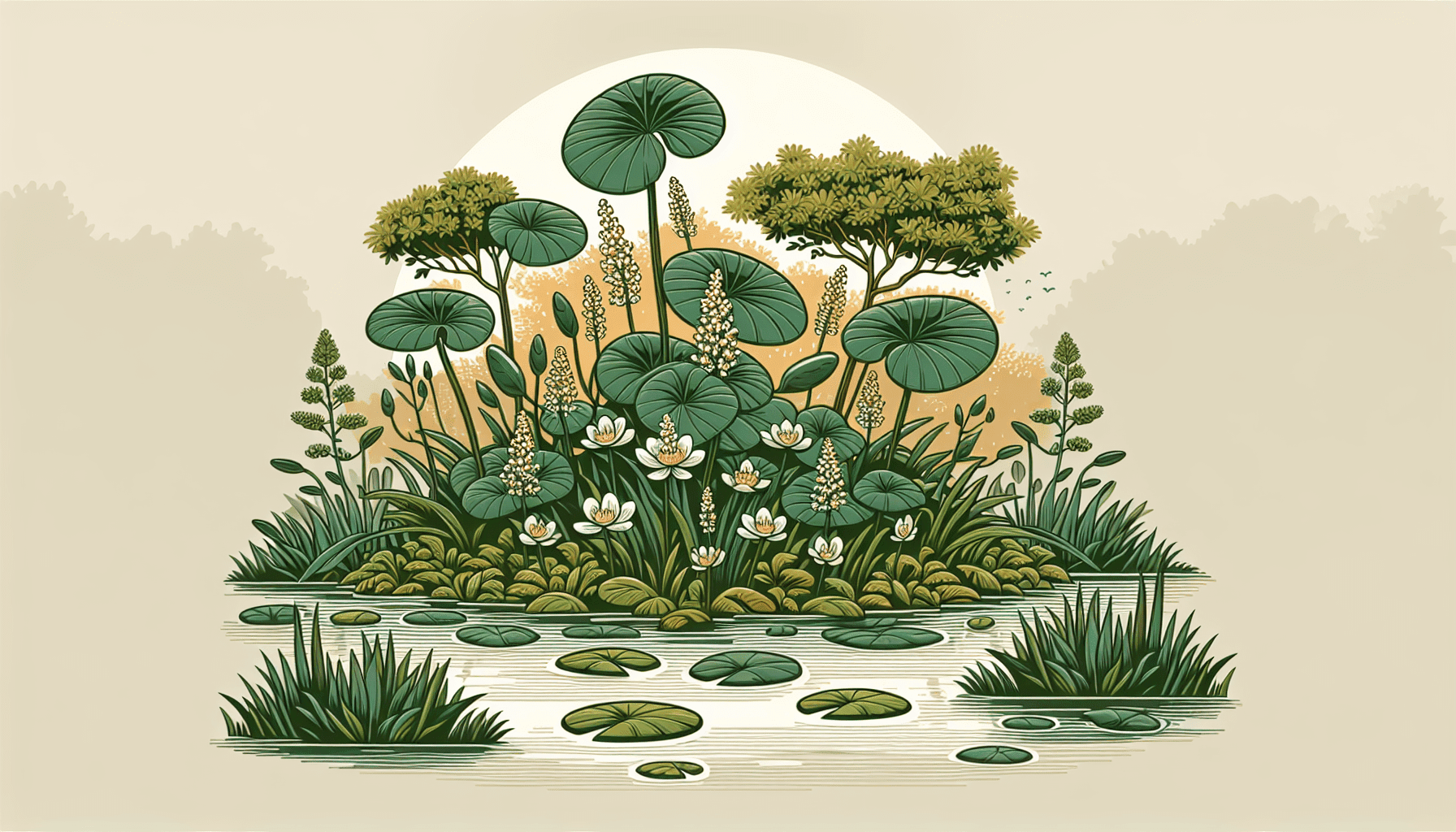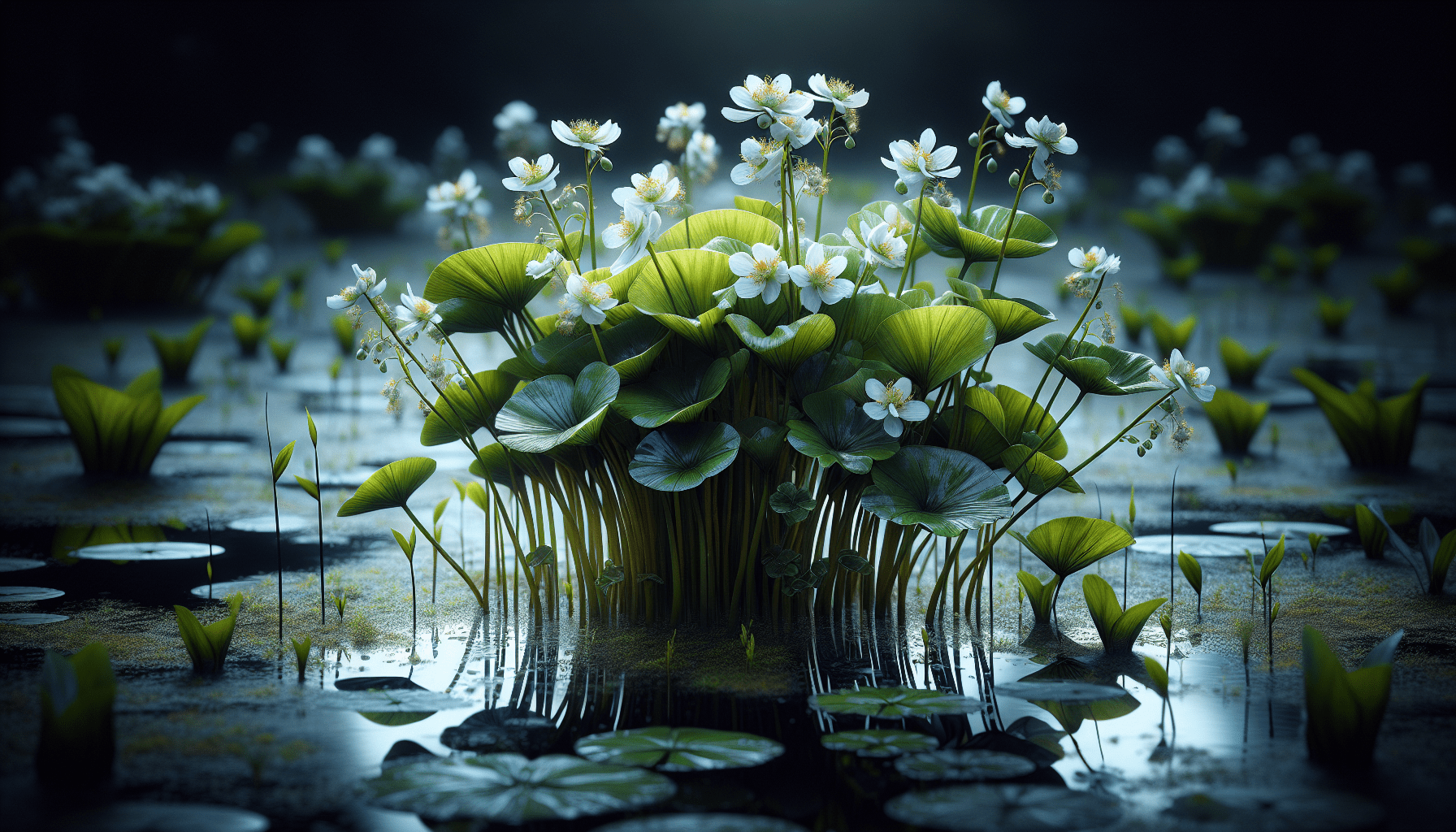In the vast realm of aquatic flora, one particular species that may pique your interest is the water plantain. This article serves as an exploratory guide into understanding this unique water-dwelling plant, aptly termed Alisma Plantago-Aquatica in the scientific lexicon. In this read, you will encounter a comprehensive examination of its taxonomic classification, ecological role, spatial distribution, and flourishing environment, positioning you at a point of profound cognizance about the fascinating world of the water plantain.

Overview of Water Plantain
Definition of water plantain
Water plantain, or Alisma plantago-aquatica, is a species of aquatic plant that belongs to the water plantain family, Alismataceae. The plant derives its name from its broad, leafy structure which somewhat resembles the leaves of plantains. It is typically found living in shallow water or marshes and serves various ecological functions for these habitats.
Scientific name and classification
The scientific name of water plantain is Alisma plantago-aquatica. It belongs to the Alismataceae family, which comprises approximately 85 different species, all aquatic to semiaquatic in nature. The genus Alisma consists of 11 species, among which, the plantago-aquatica is the most widely known and studied.
Geographic distribution and habitats
Water plantains are widely distributed across the globe. They are most commonly found in North America, Northern Asia, and Europe. This aquatic plant prefers somewhat shady, freshwater environments, and typically, inhabits damp meadows, marshes, ditches, and the edges of ponds and lakes. It can also grow in slowly moving water bodies like streams.
Physical Features of Water Plantain
Size and growth
Water plantain plants can grow up to a height of one meter depending on their environment. They are perennial plants, meaning their lifespan extends for more than two years. The growth period is between June and August.
Leaf characteristics
The leaves of the water plantain plant are broad and stiff with a triangular base and pointed tip. Primarily, they are basal leaves, originating from the base of the stem, and have long tapering stalks. These leaves can be either submerged or float on the water surface.
Flowering and seed production
The plant produces small white or pinkish flowers which are about 1 cm in diameter. These bloom between June and September. The seeds develop starting late summer and can continue into the fall. They are flat, oval-shaped and are dispersed by wind and water currents.
Root system
Water plantain has a complex submerged root system that anchors it strongly to the waterbed. It also has rhizomes or horizontal stems that run under or along the ground producing new plants at the nodes.
Ecological Role of Water Plantain
Role in water purification
Water plantain plays a significant role in water purification. It absorbs various toxic heavy metals and harmful nutrients from water, thus improving the water quality of its habitat.
Importance in the food chain
Water plantain acts as a primary food source for various aquatic animals. Its leafy structure provides shelter for aquatic insects, while its seeds serve as food for birds and small mammals.
Impact on soil and sediment stability
The root system of water plantain contributes to soil and sediment stability by reducing motion in the water, hence playing an essential role in preventing soil erosion.

Cultivation of Water Plantain
Ideal growth conditions
For cultivation, water plantain prefers full sunlight to partial shade and can thrive in muddy soils with a high moisture content. A water depth of about 30 cm is considered ideal for its growth.
Planting techniques
Water plantains can be planted either by sowing seeds directly into the wet soil, or by transplanting young plants. They should be planted at a depth of around 2-3 cm in the soil.
Maintenance and care
Water plantain is a low maintenance plant. It doesn’t require any specific fertilizer or compost. The only requirement is to keep the soil consistently damp and to periodically remove dead leaves and flowers.
Propagation Methods for Water Plantain
Seed propagation
Seeds can be collected from a mature water plantain plant. When sown in a cold-frame, the seeds will germinate in the following spring.
Division propagation
During spring, the plants can be dug up and divided. The divisions should be planted in pots submerged in a greenhouse tank. Once established, these new plants can be planted outside during summer.
Cutting propagation
Water plantain can also be propagated by taking cuttings in spring. These cuttings should be rooted in a frame before being transplanted.
Health Benefits of Water Plantain
Nutritional value
Water plantain is rich in nutrients, containing essential vitamins like Vitamin A and C, and key minerals such as calcium and iron.
Traditional medicinal uses
In traditional medicine, water plantain has been used to treat various ailments such as kidney stones, bronchitis, and dysentery. The plant purportedly has diuretic, demulcent, and antiseptic properties.
Modern health studies
Modern studies show that water plantain may promote kidney health, have anti-diabetic effects, and help with weight loss. However, further research is required to confirm these health benefits.
Potential Dangers of Water Plantain
Possible toxicity in livestock and pets
While generally safe for human consumption, water plantain can potentially be toxic to livestock and pets, especially when consumed in large quantities.
Invasive characteristics
The water plantain plant can easily grow and spread in favorable conditions, and hence, can potentially become invasive, crowding out native species.
Allergic reactions in some people
Some individuals may experience allergic reactions to water plantain, including skin irritation or respiratory issues.
Water Plantain in Garden Design
Use in water gardens
Water plantain is an ideal plant for water gardens due to its attractive foliage and ability to grow in waterlogged conditions. It can act as a focal point in the garden and also provide cover for aquatic animals.
Complementary plant species
Water plantain pairs well with other aquatic plants such as pickerelweed, blue flag iris, and water lilies.
Impact on local wildlife
This plant attracts various forms of wildlife. It is visited by insects such as bees and flies for its nectar, while its seeds attract birds and small mammals.
Conservation Issues Regarding Water Plantain
Threats to natural populations
Habitat destruction and pollution pose serious threats to the natural populations of water plantain. Overharvesting for medicinal uses also negatively impacts the plant’s survival.
Conservation efforts by governments and organizations
Governmental and non-governmental organizations across various countries have undertaken conservation efforts to protect and promote the growth of water plantains. These include habitat preservation initiatives and regulations on the harvesting of the plant.
Importance of habitat preservation
Preservation of their natural habitats is crucial for the survival of water plantains. Such habitats not only provide the requisite conditions for their growth but also support the biodiversity that depends on these plants.
Scientific Research on Water Plantain
Key research findings
Research suggests that water plantain has several potential health benefits including promoting kidney health, acting as a diuretic, and helping in weight loss. Its use in water purification has also been supported by various studies.
Ongoing studies and potential future discoveries
Ongoing studies are exploring the possible benefits of water plantain in the treatment of various other health conditions. The plant’s potential role in ecological restoration and conservation is also the subject of several research efforts.
Influence on environmental and agricultural policies
The ecological functions of water plantain, particularly its role in water purification and soil erosion prevention, have influenced environmental and agricultural policies across various regions. The plant’s capacity to thrive in waterlogged conditions also holds implications for land management and flood control strategies.